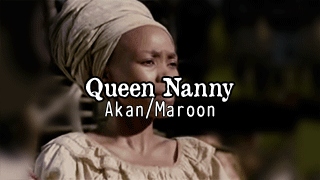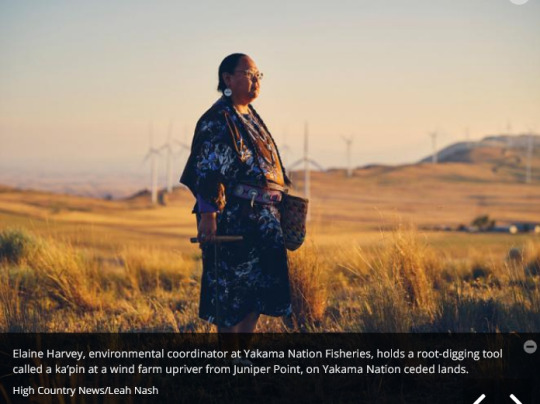#tribal land issues
Explore tagged Tumblr posts
Text
CM Hemant Soren Criticizes Opposition Leaders During Dumka Visit
Soren claims local BJP leaders are inactive, necessitating outside help. During a visit to Dumka, Jharkhand CM Hemant Soren criticized opposition leaders, claiming they are inactive and necessitating the import of leaders from other states. DUMKA – Jharkhand Chief Minister Hemant Soren criticized opposition leaders during his visit to Dumka, stating that local leaders are "discharged,"…
#Assam CM Himanta Biswa Sarma#मुख्य#Bangladeshi infiltration#Dumka visit#Featured#Hemant Soren#Jharkhand Politics#MLA Basant Soren#MLA Kalpana Soren#opposition leaders#Pakur situation#Stephen Marandi#tribal land issues
0 notes
Text
For years, the people of the Kitasoo/Xai’xais First Nation watched over their waters and waited. They had spent nearly two decades working with Canada’s federal government to negotiate protections for Kitasu Bay, an area off the coast of British Columbia that was vulnerable to overfishing.
But the discussions never seemed to go anywhere. First, they broke down over pushback from the fishing industry, then over a planned oil tanker route directly through Kitasoo/Xai’xais waters.
“We were getting really frustrated with the federal government. They kept jumping onboard and then pulling out,” says Douglas Neasloss, the chief councillor and resource stewardship director of the Kitasoo/Xai’xais First Nation. “Meanwhile, we’d been involved in marine planning for 20 years – and we still had no protected areas.”
Instead, the nation watched as commercial overfishing decimated the fish populations its people had relied on for thousands of years.
Nestled on the west coast of Swindle Island, approximately 500km north of Vancouver, Kitasu Bay is home to a rich array of marine life: urchins and abalone populate the intertidal pools, salmon swim in the streams and halibut take shelter in the deep waters. In March, herring return to spawn in the eelgrass meadows and kelp forests, nourishing humpback whales, eagles, wolves and bears.
“Kitasu Bay is the most important area for the community – that’s where we get all of our food,” Neasloss says. “It’s one of the last areas where you still get a decent spawn of herring.”
So in December 2021, when the Department of Fisheries and Oceans withdrew from discussions once again, the nation decided to act. “My community basically said, ‘We’re tired of waiting. Let’s take it upon ourselves to do something about it,’” Neasloss says.
What they did was unilaterally declare the creation of a new marine protected area (MPA). In June 2022, the nation set aside 33.5 sq km near Laredo Sound as the new Gitdisdzu Lugyeks (Kitasu Bay) MPA – closing the waters of the bay to commercial and sport fishing.
It is a largely unprecedented move. While other marine protected areas in Canada fall under the protection of the federal government through the Oceans Act, Kitasu Bay is the first to be declared under Indigenous law, under the jurisdiction and authority of the Kitasoo/Xai’xais First Nation.

Pictured: "In some ways, I hope someone challenges us" … the Kitasoo/Xai’xais stewardship authority.
Although they did not wait for government approval, the Kitasoo did consult extensively: the declaration was accompanied by a draft management plan, finalised in October after three months of consultation with industry and community stakeholders. But the government did not provide feedback during that period, according to Neasloss, beyond an acknowledgment that it had received the plan...
Approximately 95% of British Columbia is unceded: most First Nations in the province of British Columbia never signed treaties giving up ownership of their lands and waters to the crown. This puts them in a unique position to assert their rights and title, according to Neasloss, who hopes other First Nations will be inspired to take a similarly proactive approach to conservation...
Collaboration remains the goal, and Neasloss points to a landmark agreement between the Haida nation and the government in 1988 to partner in conserving the Gwaii Haanas archipelago, despite both parties asserting their sovereignty over it. A similar deal was made in 2010 for the region’s 3,400 sq km Gwaii Haanas national marine conservation area.
“They found a way to work together, which is pretty exciting,” says Neasloss. “And I think there may be more Indigenous protected areas that are overlaid with something else.”
-via The Guardian, 5/3/23
#indigenous#indigenous issues#indigenous sovereignty#canada#british columbia#land back#first nations#tribal sovereignty#pacific northwest#marine protected area#conservation#sustainability#overfishing#marine science#canadian government#kitasoo-xai'xais#direct action#good news#hope
11K notes
·
View notes
Text
Hey if you live in the usa and you either:
are enrolled in any govt assistance programs like SNAP, medicaid, ssi, etc
live on tribal lands*
or have a household income at or below the values on the table below
you should enroll in the affordable connectivity program to get an automatic discount to your internet bill. $30/mo off your service--$75 off if you meet the second condition--and a device discount of $100 for hardware (computers, tablets, laptops, etc.) Full qualification page HERE.

it takes like. 20 minutes maybe? Google "[your internet provider] affordable connectivity program" to find the application directly through your ISP. they'll want you to first find out if you qualify through the National Verifier HERE. if you want to qualify through income, you'll probably have to upload a paystub or tax return but other than that it's very painless. The application through your ISP should also be pretty painless.
definitely do this. it's free money. it's for you. take it.
Link 1: https://www.affordableconnectivity.gov/do-i-qualify/ Link 2: https://getinternet.gov/apply
*phrasing from the govt site. I'm not sure if this is appropriate phrasing in casual conversation, so I apologize if not. please let me know if there is a better way to say this.
#myaa#sorry for being awkward abt the tribal lands phrasing but i kno tribal is a p loaded word#but i know reservation is also very loaded#and I don't know if there's a less loaded way to talk about them#i at least wanted to acknowledge that could be an issue
224 notes
·
View notes
Text
struggling with how to word this, but putting it out there anyway:
i can fully understand the posts on here from a lot of americans being tired of "vote blue no matter who" posts when the #1 thing that people are constantly (and sometimes only?) addressing is how the republican party is going treat trans/queer people if elected.
it's part of an unfortunate pattern of prioritizing the effects on a demographic that includes white + upper class people, when people of color and those in the global south are actively and currently being killed or relegated to circumstances in which their survival is very unlikely
it is genuinely exhausting to witness this, and i was also on the fence about even participating in voting because i a) felt like it didn't matter and b) every time i voiced being frustrated with the current state of the country, white queer people would immediately step in with "but what about trans people!" -> (i am mixed race trans man)
and i say this with unending patience toward people who do this, because i know that it's not something they actively think about. but everyone already knows how the republican party is going to treat queer people. you are probably talking to another queer person when you bring up project 2025. the issue is that, for those of us who aren't white, or for those of us who are but who are conscious of ongoing struggles for people of color worldwide, the safety of people around the world feels more urgent than our own. that is the calculation that's being made.
you're not going to win votes for the democratic party by dismissing or minimizing these realities and by continually centering (white) queer people.
very few people on here and twitter are actually talking about issues beyond queer rights that concern people of color, or how the two administrations differ on these issues instead of constantly circling back to single-issue politics. this isn't an exhaustive list. but these are the issues that have actually altered my perspective and motivated me to the point of committing to casting a vote
the biden administration has been engaged in a years-long fight to allow new applicants to DACA (Deferred Action for Childhood Arrivals, the program that allows undocumented individuals who arrived as children to remain in the country) after the Trump administration attempted to terminate it. the program is in limbo currently because of the actions of Trump-backed judges, with those who applied before the ruling being allowed to stay, but no new applications are being processed. Trump has repeatedly toyed with the idea of just deporting the 1.8 million people, but he continues to change his mind depending on whatever the fuck goes on in his head. he cannot be relied on to be sympathetic toward people of hispanic descent or to guarantee that DREAMers will be allowed stay in the country. biden + a democratic controlled congress will allow legal challenges to the DACA moratorium to gain ground.
the biden administration is open to returning and protecting portions of culturally important indigenous land in a way that the trump administration absolutely does not give a fuck. as of may 2024, they have established seven national monuments with plans to expand the San Gabriel Monument where the Gabrielino, Kizh / Tongva, the Chumash, Kitanemuk, Serrano, and Tataviam reside. the Berryessa Snow Mountain is also on the list, as a sacred region to the Patwin.
i'm recognizing that the US's plans for clean energy have often come into conflict with tribal sovereignty, and the biden administration could absolutely do better in navigating this. but the unfortunate dichotomy is that there would be zero commitment or investment in clean energy under a trump-led government, which poses an astounding existential threat and destabilizing force to the global south beyond any human-to-human conflict. climate change has caused and will continue to cause resource shortages, greater natural disasters, and near-lethal living conditions for those in the tropics - and the actions of the highest energy consumers (US) are to blame. biden has funneled billions of dollars into climate change mitigation and clean energy generation - trump does not believe that any of it matters.
i may circle back to this and add more as it comes up, but i'm hoping that those who are skeptical / discouraged / tired of the white queer-centric discourse on tumblr and twitter can at least process some of this. please feel free to add more articles + points but i'm asking for the sake of this post to please focus on issues that affect people of color.
19K notes
·
View notes
Text
Things the Biden-Harris Administration Did This Week #39
October 18-25 2024.
President Biden issued the first presidential apology on behalf of the federal government to America's Native American population for the Indian boarding school policy. For 150 years the federal government operated a system of schools which aimed to destroy Native culture through the forced assimilation of native children. At these schools students faced physical, emotional, and sexual abuse, and close to 1,000 died. The Biden-Harris Administration has been historic for Native and Tribal rights. From the appointment of the first ever Native American cabinet member, Secretary of the Interior Deb Haaland, to the investment of $46 billion dollars on tribal land, to 200 new co-stewardship agreements. The last 4 years have seen a historic investment in and expansion of tribal rights.
The Biden-Harris Administration proposed a new rule which would make contraceptive medication (the pill) free over the counter with most Insurance. The new rule would ban cost sharing for contraception products, including the pill, condoms, and emergency contraception. On top of over the counter medications, the new rule will also strength protections for prescribed contraception without cost sharing as well.
The EPA announced its finalized rule strengthening standards for lead paint dust in pre-1978 housing and child care facilities. There is no safe level of exposure to lead particularly for children who can suffer long term developmental consequences from lead exposure. The new standards set the lowest level of lead particle that can be identified by a lab as the standard for lead abatement. It's estimated 31 million homes built before the ban on lead paint in 1978 have lead paint and 3.8 million of those have one or more children under the age of 6. The new rule will mean 1.2 million fewer people, including over 300,000 children will not be exposed to lead particles every year. This comes after the Biden-Harris Administration announced its goal to remove and replace all lead pipes in America by the end of the decade.
The Department of Transportation announced a $50 million dollar fine against American Airlines for its treatment of disabled passengers and their wheelchairs. The fine stems from a number of incidences of humiliating and unfair treatment of passages between 2019 and 2023, as well as video documented evidence of mishandling wheelchairs and damaging them. Half the fine will go to replacing such damaged wheelchairs. The Biden administration has leveled a historic number of fines against the airlines ($225 million) for their failures. It also published a Airline Passengers with Disabilities Bill of Rights, passed a new rule accessible lavatories on aircraft, and is working on a rule to require airlines to replace lost or damaged wheelchairs with equal equipment at once.
The Department of Energy announced $430 million dollars to help boost domestic clean energy manufacturing in former coal communities. This invests in projects in 15 different communities, in places like Texas, West Virginia, Pennsylvania, Tennessee, Kentucky, and Michigan. The plan will bring about 1,900 new jobs in communities struggling with the loss of coal. Projects include making insulation out of recycled cardboard, low carbon cement production, and industrial fiber hemp processing.
The Department of Transportation announced $4.2 billion in new infrastructure investment. The money will go to 44 projects across the country. For example the MBTA will get $400 million to replace the 92 year old Draw 1 bridge and renovate North Station.
The Department of Transportation announced nearly $200 million to replace aging natural gas pipes. Leaking gas lines represent a serious public health risk and also cost costumers. Planned replacements in Georgia and North Carolina for example will save the average costumer there over $900 on their gas bill a year. Replacing leaking lines will also remove 1,000 metric tons of methane pollution, annually.
The Department of the Interior announced $244 million to address legacy pollution in Pennsylvania coal country. This comes on top of $400 million invested earlier this year. This investment will help close dangerous mine shafts, reclaim unstable slopes, improve water quality by treating acid mine drainage, and restore water supplies damaged by mining.
Data shows that President Biden's Inflation Reduction Act (passed with Vice-President Harris' tie breaking vote) has saved seniors $1 billion dollars on out-of-pocket drug costs. Seniors with certain high priced drugs saw their yearly out of pocket costs capped at $3,500 for 2024. In 2024 all seniors using Medicare Part D will see their out of pocket costs capped at $2,000 for the year. It's estimated if the $2,000 cap had been in effect this year 4.6 million seniors would have hit it by June and not have had to pay any more for medication for the rest of the year.
The Department of Education announced a new proposed rule to bring student debt relief for 8 million struggling borrowers. The Biden-Harris Administration has managed despite road blocks from Republicans in Congress, the courts and law suits from Republican states to bring student loan forgiveness to 5 million Americans so far through different programs. This latest rule would take into account many financial hardships faced by people to determine if they qualify to have their student loans forgiven. The final rule cannot be finalized before 2025 meaning its fate will be decided at the election.
The Department of Agriculture announced $1.5 billion in 92 partner-driven conservation projects. These projects aim at making farming more susceptible and environmental friendly, 16 projects are about water conservation in the West, 6 support use of innovative technologies to reduce enteric methane emissions in livestock. $100 million has been earmarked for Tribal-led projects.
#Thanks Biden#Joe Biden#Kamala Harris#politics#US politics#American politics#Native Americans#indigenous rights#lead paint#reproductive rights#reproductive health#lead poisoning#disability#infastructure#climate change#drug prices
6K notes
·
View notes
Text
(7th meeting) UN Permanent Forum on Indigenous Issues, 23rd session.
Item 5 (f): Dialogue on Indigenous platforms established within United Nations entities
The United Nations Permanent Forum on Indigenous Issues (UNPFII) is a high- level advisory body to the Economic and Social Council. The Forum was established on 28 July 2000 by resolution 2000/22, with the mandate to deal with indigenous issues related to economic and social development, culture, the environment, education, health and human rights.
More specifically, the Permanent Forum:
provides expert advice and recommendations on indigenous issues to the Council, as well as to programmes, funds and agencies of the United Nations, through ECOSOC;
raises awareness and promotes the integration and coordination of activities related to indigenous issues within the UN system;
prepares and disseminates information on indigenous issues;
promotes respect for and full application of the provisions of the UN Declaration on the Rights of Indigenous Peoples and follow up the effectiveness of this Declaration (Art. 42 UNDRIP).
The twenty-third session of the UN Permanent Forum on Indigenous Issues (UNPFII) will take place in-person at UN Headquarters in New York from 15-26 April 2024. Theme: "Enhancing Indigenous Peoples' right to self-determination in the context of the United Nations Declaration on the Rights of Indigenous Peoples: emphasizing the voices of Indigenous youth".
UNFPPI23 Provisional Agenda.

#unpfii23#permanent forum on indigenous issues#united nations headquarters#right to land#right to self determination#indigenous rights#indigenous issues#tribal groups#aboriginal#indigenous#indigenous youth#indigenous peoples#plenary sessions#indigenous communities#UN Economic and Social Council#ecosoc
0 notes
Text








Historical Indigenous Women & Figures [6]:
Queen Nanny: the leader of the 18th century Maroon community in Jamaica, she led multiple battles in guerrilla war against the British, which included freeing slaves, and raiding plantations, and then later founding the community Nanny Town. There are multiple accounts of Queen Nanny's origins, one claiming that she was of the Akan people from Ghana and escaped slavery before starting rebellions, and others that she was a free person and moved to the Blue Mountains with a community of Taino. Regardless, Queen Nanny solidified her influence among the Indigenous People of Jamaica, and is featured on a Jamaican bank note. Karimeh Abboud: Born in Bethlehem, Palestine, Karimeh Abboud became interested in photography in 1913 after recieving a camera for her 17th birthday from her Father. Her prestige in professional photography rapidly grew and became high demand, being described as one of the "first female photographers of the Arab World", and in 1924 she described herself as "the only National Photographer". Georgia Harris: Born to a family of traditional Catawba potters, Harris took up pottery herself, and is credited with preserving traditional Catawba pottery methods due to refusing to use more tourist friendly forms in her work, despite the traditional method being much more labour intensive. Harris spent the rest of her life preserving and passing on the traditional ways of pottery, and was a recipient of a 1997 National Heritage Fellowship awarded by the National Endowment for the Arts, which is the highest honor in the folk and traditional arts in the United States. Nozugum: known as a folk hero of the Uyghur people, Nozugum was a historical figure in 19th century Kashgar, who joined an uprising and killed her captor before running away. While she was eventually killed after escaping, her story remains a treasured one amongst the Uyghur. Pampenum: a Sachem of the Wangunk people in what is now called Pennsylvania, Pampenum gained ownership of her mother's land, who had previously intended to sell it to settlers. Not sharing the same plans as her mother, Pampenum attempted to keep these lands in Native control by using the colonial court system to her advantage, including forbidding her descendants from selling the land, and naming the wife of the Mohegan sachem Mahomet I as her heir. Despite that these lands were later sold, Pampenum's efforts did not go unnoticed. Christine Quintasket: also known as "Humishima", "Mourning Dove", Quintasket was a Sylix author who is credited as being one of the first female Native American authors to write a novel featuring a female protagonist. She used her Sylix name, Humishima, as a pen name, and was inspired to become an author after reading a racist portrayal of Native Americans, & wished to refute this derogatory portrayal. Later in life, she also became active in politics, and helped her tribe to gain money that was owed them. Rita Pitka Blumenstein: an Alaskan Yup'ik woman who's healing career started at four years old, as she was trained in traditional healing by her grandmother, and then later she became the first certified traditional doctor in Alaska and worked for the Alaska Native Tribal Health Consortium. She later passed on her knowledge to her own daughters. February 17th is known as Rita Pitka Blumenstein day in Alaska, and in 2009 she was one of 50 women inducted into the inaugural class of the Alaska Women's Hall of Fame Olivia Ward Bush-Banks: a mixed race woman of African American and Montaukett heritage, Banks was a well known author who was a regular contributor to the the first magazine that covered Black American culture, and wrote a column for a New York publication. She wrote of both Native American, and Black American topics and issues, and helped sculptor Richmond Barthé and writer Langston Hughes get their starts during the Harlem Renaissance. She is also credited with preserving Montaukett language and folklore due to her writing in her early career.
part [1], [2], [3], [4], [5] Transphobes & any other bigots need not reblog and are not welcome on my posts.
547 notes
·
View notes
Text

Excerpt from this story from Inside Climate News:
The Navajo Nation doesn’t allow radioactive uranium ore to be transported through its lands without permission, but that’s exactly what a mining company began doing this week on roads administered by the state—which has no such restrictions.
Navajo Nation President Buu Nygren told tribal police to stop the trucks, and he issued an executive order Wednesday that called for the company to negotiate a hauling agreement with the tribe before any other trucks enter Navajo land. First Lady Jasmine Blackwater-Nygren announced a “No Illegal Uranium Hauling” walk along part of the transportation route in Cameron. Arizona Gov. Katie Hobbs, under pressure for months from tribes and environmental advocates over the situation, subsequently brokered a deal with the company to hit pause.
In a Thursday night call, Hobbs told Nygren that shipments would halt until the company—Energy Fuels Resources—and the Navajo Nation hold discussions about safety concerns.
While Nygren is glad the governor acted, he wants to know how long transportation activities will stop.
“I don’t know what temporary hold means on the governor’s side,” Nygren said in an interview after the walk, held Friday morning. “Does that mean five days? Does that mean 10 days? Does that mean a month? … I hope temporary means six months, aligning with my executive order, so that we can have those discussions.”
Asked by Inside Climate News about timing, a Hobbs spokesperson said, “At this moment, there’s no additional information on when the end date will be.”
Energy Fuels Resources, the owner of Pinyon Plain Mine in Arizona and White Mesa Mill in Utah, confirmed it started hauling ore from one site to the other on Tuesday. In a statement issued before the agreement to pause that work, the company said this transportation is “safe and legal” and “in accordance with all applicable laws and regulations.”
State law doesn’t bar that transport, but a Navajo law enacted in 2012 does. The situation cuts to the heart of U.S. history with Indigenous people: Treaty agreements that acknowledge tribal nations’ right to determine what happens on their lands are routinely ignored by states, companies and the federal government.
“Energy Fuels is subject to Navajo authority when accessing Navajo territory and can be excluded from Navajo territory for threatening the well-being of the Navajo People, although they likely claim they are beyond Navajo authority when on a state highway running through the Navajo reservation,” Gabe Galanda, an Indigenous rights attorney and the managing lawyer at Galanda Broadman, said in an email. “The state of Arizona may likewise claim regulatory power over a state highway running through the Navajo reservation but that assertion affronts Navajo inherent sovereignty and territorial control.”
310 notes
·
View notes
Text
I think the thing that bothers me the most about this wave of "actually I do think all settlers should leave" posts coming from NDN bloggers (who would NOT be saying that shit just a few months ago) is like. Who is exactly is considered a settler?
Is it Black people whose ancestors were brought to North America as slaves?
Is it immigrants who came to the US and Canada in hopes of a better life compared to countries who are being horribly exploited?
Is it refugees who fled from war and violent persecution in their home countries?
Or is it just white people? What if they're immigrants for the above reasons? Are we okay with sending people to their deaths? How do we even decide who's white enough to be a settler? Who would be deciding that? Will things like ethnicity and religion be taken into account, especially when those things are relevant to their safety in their families' home countries?
And what about mixed people? What about mixed Natives? How many Native people can honestly say that they don't have "settler blood" and family members who aren't Native? Would it be based on things like tribal enrollment, even with all the already horrible tribal politics going on? Or what about blood quantum and all its issues and its role in colonialism? What about Native people who, for whatever reason, don't know their tribes? What about tribes that aren't federally recognized? What would happen to them? What would happen to us?
There's a reason why indigenous sovereignty and Land Back movements are so intent on rejecting the idea that sovereignty would mean everyone else leaving. It's not just out of kindness, it's also because that kind of separation IS NOT POSSIBLE. It just isn't. There is no clean line between "settler" and "indigenous", especially not after a few hundred years.
(And I've said it before, but to all the non-Native Americans and Canadians posting about how they'd actually be sooooo fine with being violently murdered in an indigenous revolution: shut up. You are not helping and you're a fucking liar who's only comfortable saying that shit because you know it'll never happen to you.)
493 notes
·
View notes
Text
Government Officials Should Not Act Arbitrarily - Sahis
AJSU Party Organizes Halla Bol Program at Patmada Block Office On Monday, July 15, the AJSU Party Patamda Block Committee organized a Halla Bol program at the Patamda Block Office, starting with a march from Beltard Chowk to the block office, with loud slogans in support of Ramchandra Sahis, AJSU Party, and Sudesh Mahto. JAMSHEDPUR – On Monday, July 15, the AJSU Party Patamda Block Committee…
#AJSU Party#जनजीवन#education for Dalits#Government Accountability#grassroots movement#Jharkhand Politics#Life#Patmada Halla Bol#Ramchandra Sahis#sudesh mahto#tribal land issues
0 notes
Text
"Cody Two Bears, a member of the Sioux tribe in North Dakota, founded Indigenized Energy, a native-led energy company with a unique mission — installing solar farms for tribal nations in the United States.
This initiative arises from the historical reliance of Native Americans on the U.S. government for power, a paradigm that is gradually shifting.
The spark for Two Bears' vision ignited during the Standing Rock protests in 2016, where he witnessed the arrest of a fellow protester during efforts to prevent the construction of the Dakota Access Pipeline on sacred tribal land.
Disturbed by the status quo, Two Bears decided to channel his activism into action and create tangible change.
His company, Indigenized Energy, addresses a critical issue faced by many reservations: poverty and lack of access to basic power.
Reservations are among the poorest communities in the country, and in some, like the Navajo Nation, many homes lack electricity.
Even in regions where the land has been exploited for coal and uranium, residents face obstacles to accessing power.
Renewable energy, specifically solar power, is a beacon of hope for tribes seeking to overcome these challenges.
Not only does it present an environmentally sustainable option, but it has become the most cost-effective form of energy globally, thanks in part to incentives like the Inflation Reduction Act of 2022.
Tribal nations can receive tax subsidies of up to 30% for solar and wind farms, along with grants for electrification, climate resiliency, and energy generation.
And Indigenized Energy is not focused solely on installing solar farms — it also emphasizes community empowerment through education and skill development.
In collaboration with organizations like Red Cloud Renewable, efforts are underway to train Indigenous tribal members for jobs in the renewable energy sector.
The program provides free training to individuals, with a focus on solar installation skills.
Graduates, ranging from late teens to late 50s, receive pre-apprenticeship certification, and the organization is planning to launch additional programs to support graduates with career services such as resume building and interview coaching...
The adoption of solar power by Native communities signifies progress toward sustainable development, cultural preservation, and economic self-determination, contributing to a more equitable and environmentally conscious future.
These initiatives are part of a broader movement toward "energy sovereignty," wherein tribes strive to have control over their own power sources.
This movement represents not only an economic opportunity and a source of jobs for these communities but also a means of reclaiming control over their land and resources, signifying a departure from historical exploitation and an embrace of sustainable practices deeply rooted in Indigenous cultures."
-via Good Good Good, December 10, 2023
#indigenous#native americans#first nations#indigenous rights#tribal sovereignty#solar energy#solar power#solar panels#renewable energy#green energy#sioux#sioux nation#sustainability#climate hope#electrification#united states#hope#good news
2K notes
·
View notes
Text
A study of wolves: chapter three
chapter one ✩ chapter two
Paul Lahote x Reader

- The previous day -
“Why did we even agree to this study, clearly she is going to notice signs that the wolves around here aren’t always of the typical gray variety?” Paul questioned the tribal council, pacing at the foot of the meeting table.
“Son we didn’t have a choice, the majority of the land you boys protect falls out of the reservation. It was going ahead anyway, so it made sense to at least have someone from the council always there to steer clear of anything suspicious,” Billy placated, hands up in surrender to the clearly riled man.
“Billy’s right Paul,” Sam chimed in “there wasn’t an option. Plus this way we get income from the cabin and a guide. You know we need this to complete the maintenance on the school.”
“So you are okay with us becoming a study? Because we all know between the cameras and her field observation training we’re fucked. There is no way we can always play it safe with these cold ones lurking around, a mistake is inevitable.”
“Son,” Billy continued “it’s not even like it’s an issue anymore. You’ve imprinted on her, so she is one of us now. It’s well within reason to tell her what is going on.”
“No” Paul growled. “That is my choice and it’s absolutely not happening. Some silly idea that she’s my soulmate doesn’t change the fact she is a complete stranger. We don’t how she’ll react, there is no way I’m risking it,”
“You might not have a choice if she catches sight of something she’s not supposed to.”
“This is my only choice, and I’m not letting anyone taking it from me. Not even you.”
Billy sighed, resting his head in his hands. The chief was well aware what Paul’s reservations were really about. “Son, I know you didn’t want this. But please understand this is a blessing from the spirits, fighting this will only hurt you,”
“I refuse to let my choice be taken away, and I refuse to let hers. I will help to keep our secret safe but once this project is over she will leave and life will continue. And I don’t want anyone to try to do anything to change that.”
✩₊˚.⋆☾⋆⁺₊✧ ✩₊˚.⋆☾⋆⁺₊✧
The sky was clear but the southerly winds whipped ferociously along the cliff face where Paul parked up. The great blue expanse of ocean was mesmerising, stretching out as far as the eye could see. It was in moments like this you felt solace, out of the noise and bustle of large cities. Just the sounds of birds, waves crashing and winds whistling amongst the trees. After taking the moment to ground yourself you made your way over to the truck bed to grab your gear, Paul doing the same with his own bag.
“What’s the plan?”
“Well the most recent report says the last sighting was off this trail here,” you said pointing across the gravel road and to the unsigned trail head. “It happened in a clearing about four miles in so I think we head out there keeping an eye out on the way.”
“Sure thing boss. Anything you want me to keep an eye out for?”
“If you wouldn’t mind looking for prints, the ground should be pretty muddy under the vegetation cover so anything that’s been here since the previous rainfall last week should have left a mark. I don’t think we’ll actually come across a wolf since they’re nocturnal. But hopefully we can find a good spot for at least one of the cameras,”
✩₊˚.⋆☾⋆⁺₊✧ ✩₊˚.⋆☾⋆⁺₊✧
For the past hour you had been hiking in relative silence. Paul lead the way, keeping a steady but maintainable pace. The trail itself was muddy but relatively flat, and wide enough you didn’t have to squeeze past any bushes. So far you hadn’t spotted anything apart from a wild rabbit that darted across the path in front of you.
Seeing a fallen trunk parallel to the path up ahead you decided now was as good a time as any to have a break.
“You keen for some morning tea?” You called to your companion, who gave you a nod and slowed down.
Perching on the thankfully stable trunk you pulled out the first of the sandwich haul.
“What’s your poison; PB & J or ham and cheese?”
“Whatever one you don’t want,”
“Na-ah, that wasn’t my question now was it. What kind of boss would I be if I just gave my worker scraps?”
“A standard one,” Paul smirked. Before grabbing the ham and cheese sandwich from the lunchbox. “Thanks”
“So Paul,” you began after a few bites of food, “what do you usually do besides leading clueless city girls around the forest ?”
“Thanks for making me sound like a serial killer. Plus I wouldn’t call you clueless,”
“I mean in the serial killer equation I think I’d rather be clueless. Would be worse if I willingly followed a killer into the middle of nowhere. Now answer the question idiot,” you laughed affectionately.
“Whatever the council needs really. Usually some form of construction or land maintenance,”
“Do you enjoy it? I imagine it’s nice to be working with your hands and doing something different every day?”
“I do. It’s not what I had anticipated doing, but it keeps me busy. I don’t think I could ever work in an office.”
“What did you think you’ll be doing?” You paused a second, and realised you may be getting too intrusive with someone you didn’t know. Something about Paul just made you want to dig into what made him…well him. “Sorry you don’t have to answer that. I’ll just shut up,”
“Don’t worry [y/n], it’s fine. But you have to swear you won’t tell anyone,”
“I solemnly swear,” you declared grabbing his left pinkie with your right.
“Child,” Pull laughed, before wrapping his pinkie around your own. “I also thought by now I’d be travelling the country. Maybe working with animals on my way, at a ranch or something like that,”
“Nothing wrong with that at all. In fact it’s smart, animals are obviously much better than people,”
“Obviously,” he snorted.
“May I asked what changed?”
“Ah just council things really, it’s my duty to the tribe.”
You could tell he was skirting around the answer, but you knew it would be beyond rude to pry any further.
“Well there’s still plenty of time to try something new,” you declared as you swung your backpack on. “Shall we continue future cowboy?”
✩₊˚.⋆☾⋆⁺₊✧ ✩₊˚.⋆☾⋆⁺₊✧
Hope you all enjoyed xx
Next chapter
#twilight x reader#twilight fanfiction#twilight imagine#twilight#paul lahote x reader#paul x reader#paul lahote imagine#paul lahote#paul lahote fanfic
111 notes
·
View notes
Note
As a park service employee, have you received special training regarding talking about Native Americans and their history?
I've noticed that in the last 5 or so years, there's been a push towards actually acknowledging that the people are still here and that their communities still view these lands as special. I was just at Mesa Verde and the Great Sand Dunes and the staff were so on top of it, especially with guest's questions about Native Americans today, not just the past.
It's super great to see and I was wondering if that's been an organizational effort from the parks service or if I'm just seeing the latest generation coming out of college with more education on it.
Yes! We get in-person training when we started as seasonals, new trainings available over the course of the summer, print material, and we're also encouraged to go and chat or cooperate with artists and presenters who come through the park (which the folks who organize those presentations encourage, we want to break down that wall as much as possible, and our silly little outfits do lend credence and weight to the considerably more meaningful stuff they're up to).
In all, when the Tribal Heritage Center is open we try to let people tell their own stories, but we want to be as knowledgeable as possible!
(Also Mesa Verde especially is great on that front, I interviewed for a job there a while ago, and a few of this year's coworkers were there last summer, and my old roommate was there this summer! Seems like a great place! I'm hoping to visit next summer.)
Overall the Park Service is trying really hard right now to be better at discussing Indigenous history and modern issues, and some sites are doing better, faster than others. It's a tough line to walk because we don't want to talk over people or get it wrong, so we're also trying to create as many avenues as possible for people to tell their own stories, talk about their own lives and their own culture.
108 notes
·
View notes
Text


“Is it green energy if it’s impacting cultural traditional sites?”
Yakama Nation Tribal Councilman Jeremy Takala sounded weary. For five years, tribal leaders and staff have been fighting a renewable energy development that could permanently destroy tribal cultural property. “This area, it’s irreplaceable.”
The privately owned land, outside Goldendale, Washington, is called Pushpum, or “mother of roots,” a first foods seed bank. The Yakama people have treaty-protected gathering rights there. One wind turbine-studded ridge, Juniper Point, is the proposed site of a pumped hydro storage facility. But to build it, Boston-based Rye Development would have to carve up Pushpum — and the Yakama Nation lacks a realistic way to stop it.
Back in October 2008, unbeknownst to Takala, Scott Tillman, CEO of Golden Northwest Aluminum Corporation, met with the Northwest Power and Conservation Council, a collection of governor-appointed representatives from Washington, Oregon, Idaho and Montana [...]. Tillman, who owned a shuttered Lockheed Martin aluminum smelter near Goldendale, told the council about the contaminated site’s redevelopment potential, specifically for pumped hydro storage [...]. Shortly thereafter, Klickitat County’s public utility department tried to implement Tillman’s plan [...].
Meanwhile, Tillman cleaned up and sold another smelting site, just across the Columbia River in The Dalles, Oregon, a Superfund site where Lockheed Martin had poisoned the groundwater with cyanide. He sold it to Google’s parent company, Alphabet, which operates water-guzzling data centers in The Dalles and plans to build more. For nine years, the county and Rye plotted the fate of Pushpum — without ever notifying the Yakama Nation.
The tribal government only learned of the development in December 2017, when the Federal Energy Regulatory Commission (FERC) issued a public notice of acceptance for Rye’s preliminary permit application. Tribal officials had just 60 days to catch up on nine years of development planning and issue their initial concerns and objections as public comments. [...]
When the tribe objected, FERC said it could file more public comments to the docket instead of consulting. [...]
When asked what Rye could offer the Yakama people as compensation for the irreversible destruction of their cultural property, Steimle suggested “employment associated with the project.” [...] Presented with the reality that Yakama people might not want Rye’s jobs, Steimle hesitated. “Yeah, I mean I, I can’t argue that — maybe it won’t be meaningful to them.” [...]
Klickitat County’s eagerness creates another barrier to the Yakama Nation. In Washington, a developer can take one of two permitting paths: through the state’s Energy Facility Site Evaluation Council, or through county channels. Both lead to FERC. In this case, working with the county benefits Rye: Klickitat, a majority Republican county, has a contentious relationship with the Yakama Nation [...]. “Klickitat County refuses to work with us,” said Takala. [...]
Fighting Rye's proposal has required the efforts of tribal attorneys, archaeologists and government staffers from a number of departments. [...]
And Rye’s project is just one of dozens proposed within the Yakama Nation’s 10 million-acre treaty territory. Maps from the tribe and the Washington Department of Fish and Wildlife show that of the 51 wind and solar projects currently proposed statewide — not including geothermal or pumped hydro storage projects, which are also renewable energy developments — at least 34 are on or partially on the Yakama Nation’s ceded lands.

---
Headline, images, graphics, captions, and text by: B. Toastie Oaster (High Country News). “Green colonialism is flooding the Pacific Northwest.” As published at The Wenatchee World. 25 March 2023.
1K notes
·
View notes
Text
Things Biden and the Democrats did, this week #17
May 3-10 2024
Vice President Harris announced 5.5 billion dollars to build affordable housing and address homelessness. The grants will go to 1,200 communities across all 50 states, DC and Puerto Rico. 1.3 billion will go to HUD's HOME program which builds, buys, and rehabs affordable housing for rent or ownership. 3.3 billion is headed to Community Development Block Grants which supports housing as well as homeless services, and expanding economic opportunities. Remaining funds focus on building housing for extremely low- and very low-income households, Housing for people struggling with HIV/AIDS, transitional housing for those with substance-use disorder, and money to support homeless shelters and homeless prevention programs.
At the 3rd meeting of the Los Angeles Declaration group in Guatemala Security of State Blinken announced $578 million in new US aid to Latin America. The Los Angeles Declaration is a partnership between the US and 20 other nations in the Americas to address immigration, combat human trafficking, and support economic development and improved quality of life for people in poor nations in the Americas. The bulk of the aid, over $400 million will go to humanitarian assistance to the Venezuelan people. Inside of Venezuela over 7 million people are in need of humanitarian assistance due to decades of political and economic instability. Over 7 million more have been forced to flee the country and live in poverty across the Americas. The aid will help Venezuelans both inside and outside of Venezuela.
The Department of Energy lead an effort to get the G7 to agree to phase out coal by the early 2030s. The G7 is a collection of the 7 largest Industrial economies on Earth, the US, the UK, Canada, France, Germany, Japan, and Italy. To avoid catastrophic climate change the International Energy Agency believes coal needs to be phased out by 2035. However this has been a sticking point with the G7 since 1/3rd of Japan and 1/4th of Germany's energy comes from Coal. This agreement to phase out represents a major breakthrough and the US plans to press for even wider agreement on the issue at the G20 meeting in November.
President Biden announced a major investment deal in Racine, Wisconsin, site of the failed Trump Foxconn deal. In 2018 then President Trump visited Racine and declared the planned Foxconn plant "the eighth wonder of the world.". However the promised 13,000 jobs never materialized and the Taiwan based Foxconn after bulldozing 100s of homes and farms decided not to build. President Biden inked a deal with Microsoft for the land formally given to Foxconn which will bring 2,000 new jobs to Racine to help replace the 1,000 job losses during Trump's Presidency in the community.
200 tribal governments and the US territories of American Samoa, the Northern Mariana Islands, Guam, and the U.S. Virgin Islands, published climate action plans. The plans were paid for by the Biden Administration as part of a 5 billion dollar Climate Pollution Reduction Grants program. The federal government is supporting all 50 states, territories, DC, and tribal governments to draft climate action plans, which will be used to apply for more than 4 billion dollars in grants to help turn plans into reality
As part of marking Yom HaShoah (Holocaust Remembrance Day), the Biden Administration announced a number of action aimed at combating antisemitism and supporting the Jewish Community. This included $400 million in new funding for the Nonprofit Security Grant Program. The Program has supported Synagogues and Jewish Community Centers with security improvements like bullet proof windows and trainings for staff in how to handle active shooter and hostage situations. The Department of Education issued guidance to all schools districts and federally funded colleges stressing that antisemitism is banned under Title VI of the Civil Rights Act of 1964. These actions come as part of the Biden Administration's National Strategy To Counter Antisemitism, the first ever national strategy addressing the issue by any Administration.
USAID announced $220 million in additional humanitarian aid to Yemen. This new funding will bring US aid to Yemen over the last 10 years to nearly $6 billion. Currently 18 million Yemenis are estimated as needing humanitarian assistance, 9 million of them children, and the UN believes nearly 14 million face imminent risk of famine. The US remains the single largest donor nation to humanitarian relief in Yemen.
The Department of Interior announced nearly $150 million to help communities fight drought. The funds will support 42 projects across 10 western states. This is part of the President's $8.3 billion dollar investment in the nations water infrastructure over the next 5 five years.
#Thanks Biden#Joe Biden#climate change#climate action#coal power#affordable homes#immigration#venezuela#Yemen#antisemitism#politics#us politics#Democrats#2024 elections#economy
221 notes
·
View notes
Text
(5th meeting) UN Permanent Forum on Indigenous Issues, 23rd session.
Item (5g): Thematic dialogues, including on the financing of Indigenous Peoples' work and participation in the context of, inter alia, development, climate, environment and biodiversity
The United Nations Permanent Forum on Indigenous Issues (UNPFII) is a high- level advisory body to the Economic and Social Council. The Forum was established on 28 July 2000 by resolution 2000/22, with the mandate to deal with indigenous issues related to economic and social development, culture, the environment, education, health and human rights.
More specifically, the Permanent Forum:
provides expert advice and recommendations on indigenous issues to the Council, as well as to programmes, funds and agencies of the United Nations, through ECOSOC;
raises awareness and promotes the integration and coordination of activities related to indigenous issues within the UN system;
prepares and disseminates information on indigenous issues;
promotes respect for and full application of the provisions of the UN Declaration on the Rights of Indigenous Peoples and follow up the effectiveness of this Declaration (Art. 42 UNDRIP).
Watch the (5th meeting) UN Permanent Forum on Indigenous Issues, 23rd session
#plenarysessions#unfpii23#Indigenous Peoples#indigenous youth#right to land#indigenous rights#right to self determination#United Nations Permanent Forum on Indigenous Issues#tribal groups
1 note
·
View note